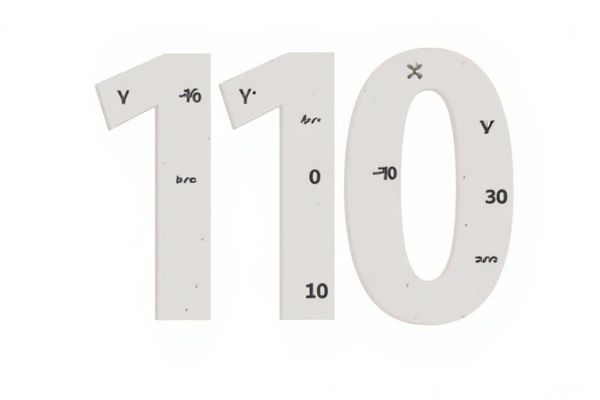
Explore our online random number generator designed to produce decimal values between 1 and 10 quickly and accurately. This intuitive tool supports various applications requiring precise numerical randomness, ensuring reliable and unbiased results. Experience seamless number generation that enhances your data analysis, gaming, or decision-making tasks.
Online tool for random number generator 1 10 with decimals
We have prepared sample lists of random numbers between 1 and 10 with decimals for you to use instantly. You can also enter your own list for customization. With a single click, you will receive a randomized list along with one selected value for your convenience.Data Source
Single Result
Multiple Results
Understanding Decimal Random Number Generators
Decimal random number generators produce random values within a specified range, such as between 1 and 10, including fractional numbers with decimal precision. These generators use algorithms like linear congruential generators or Mersenne Twister to ensure uniform distribution of floating-point outputs. Understanding their mechanics helps in applications like simulations, statistical sampling, and digital games where precise decimal randomness is crucial.
Key Features of 1 to 10 Decimal Generators
Random number generators producing values between 1 and 10 with decimals offer precise control over floating-point outputs, enabling granular simulations and statistical sampling. Key features include customizable decimal place accuracy, uniform distribution across the specified range, and high-quality entropy sources to ensure randomness. These generators are essential for applications requiring fine numerical differentiation such as scientific modeling, gaming, and financial analysis.
Algorithms Behind Decimal Generation
Random number generators producing decimals between 1 and 10 rely on algorithms like Linear Congruential Generators (LCG) or Mersenne Twister, which generate uniform integers that are then scaled and shifted to the desired range with decimal precision. Techniques such as floating-point arithmetic and bit manipulation ensure the output includes fractional parts, achieving continuous distributions rather than discrete integer values. Advanced methods incorporate entropy sources and hashing functions to enhance unpredictability and statistical randomness in decimal generation.
Popular Uses for Decimal Random Numbers
Decimal random numbers between 1 and 10 are widely used in scientific simulations, financial modeling, and gaming algorithms for precise value generation. These numbers enable accurate probability distributions and stochastic processes essential for risk assessment and decision-making models. In computer graphics and machine learning, decimal random values assist in creating realistic textures and initializing model parameters for enhanced performance.
Online Tools for Generating Decimal Values
Online tools for generating random decimal numbers between 1 and 10 provide precise and customizable outputs ideal for simulations and statistical sampling. These generators often feature adjustable decimal places, allowing users to specify the level of precision necessary for scientific calculations or programming tasks. Many platforms integrate algorithms like Linear Congruential Generators or Mersenne Twister, ensuring high-quality randomness and repeatability in user-defined ranges.
Programming Languages for Decimal Randomization
Programming languages like Python, JavaScript, and Java provide functions for generating random decimal numbers between 1 and 10, often using libraries such as Python's `random.uniform(1, 10)` or JavaScript's `Math.random() * 9 + 1` to create floating-point values within the specified range. These languages support precision control through formatting methods like Python's `round()` function or JavaScript's `toFixed()` method, allowing developers to customize decimal places in random outputs. Efficient decimal random number generation is essential for simulations, games, and statistical modeling, where precise floating-point randomness between 1 and 10 is required.
Ensuring True Randomness in Generated Decimals
Ensuring true randomness in generated decimals between 1 and 10 requires robust algorithms that leverage entropy sources such as hardware-based randomness or environmental noise. Pseudorandom number generators (PRNGs) often produce patterns, so true random number generators (TRNGs) utilize quantum phenomena or physical processes to generate unpredictable decimal values. Implementing cryptographic techniques and continuous entropy testing helps maintain the integrity and unpredictability of decimal numbers generated within this range.
Security Considerations for Decimal RNGs
Decimal random number generators (RNGs) operating between 1 and 10 require robust entropy sources to prevent predictability and ensure cryptographic security. Weak entropy or poorly designed RNG algorithms can lead to vulnerabilities such as pattern recognition or replay attacks. Implementing hardware-based RNGs or cryptographically secure pseudo-random number generators (CSPRNGs) with proper seeding mechanisms enhances the security of decimal RNG outputs.
Accuracy and Precision in Random Decimal Outputs
Random number generators producing decimals between 1 and 10 require high accuracy to ensure values genuinely fall within the specified range and high precision to produce finely granulated decimal outputs. Accuracy depends on the algorithm's ability to avoid bias and maintain uniform distribution, while precision involves generating decimal places with consistent resolution, often up to several decimal digits. Advanced techniques like floating-point arithmetic and high-quality entropy sources improve both accuracy and precision in random decimal outputs.
Troubleshooting Common Issues in Decimal RNGs
Decimal random number generators (RNGs) between 1 and 10 often encounter issues such as non-uniform distribution, limited precision, and rounding errors that affect randomness quality. Troubleshooting involves verifying the seeding process to ensure true randomness, checking floating-point arithmetic precision, and testing output against expected probability distributions. Debugging code for boundary conditions and validating generator algorithms with statistical tests like chi-square or Kolmogorov-Smirnov improves reliability and accuracy in decimal RNG implementations.
 azrandom.com
azrandom.com